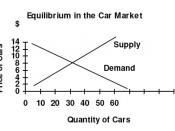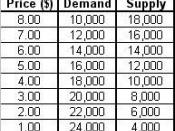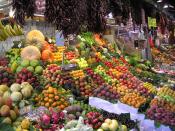Trends in consumption patterns are principally the study of economics. Economics is the study of how human beings coordinate their wants and desires, given the decisions-making mechanisms, social customs, and political realities of the society. (Colander, 2004, p.18) The trends typically fluctuates based upon the supply and demand of a given product or service. When quantity of a given product or service rises as price rises, and so when the supply of the same so does the price when other things constant. (Colander, 2004, p.90) Demand on the other hand, dictates that the demand rises as prices falls, and so the demand falls as the prices rise, again, as long as other things remain constant. (Colander, 2004, p.84) What this means from a consumer perspective is it that when the price goes down the demand goes up and conversely when the price goes up the demand goes down. Consumers are more likely to purchase a product or use a service when the prices are lower and hold off purchasing when prices are higher.
From manufacturer or service providers perspective when the prices are higher the supply will increase and as prices decrease so will the supply.
A factor in consumption trends is the wealth of consumers. The consumption of fruits and vegetable in the United States has increased in the past two decades along with the nation's prosperity. Higher incomes allow consumers to make buying decisions based upon factors other than just cost, such as health concerns and caloric needs. Fruit and vegetable inclusion has long been considered an important part of any healthy diet. Consumers have traditionally made diet decisions based upon several factors like health, availability, and cost.
Fruit and vegetable consumption is most often based upon seasonally available foods. The most affordable produce are those grown locally...


